Advertisements
Advertisements
प्रश्न
In the given circle with centre O, ∠ABC = 100°, ∠ACD = 40° and CT is a tangent to the circle at C. Find ∠ADC and ∠DCT.
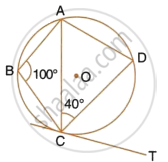
उत्तर
Given
`{:(∠ABC = 100^circ),(∠ACD = 40^circ):}}` ...(Given)
∠ABC + ∠ACD = 180° ...(Opposite angles of a cyclic quadrilateral)
100° + ∠ADC = 180°
∴ ∠ADC = 180° – 100° = 80°
Also,
∠ACD + ∠ADC + ∠CAD = 180° ...(Sum of angles of a triangle)
40° + 80° + ∠CAD = 180°
∠CAD = 180° – 120° = 60°
Now, ∠DCT = ∠CAD = 60° ...(Alternate segment theorem)
APPEARS IN
संबंधित प्रश्न
In cyclic quadrilateral ABCD, ∠DAC = 27°; ∠DBA = 50° and ∠ADB = 33°.
Calculate:
- ∠DBC,
- ∠DCB,
- ∠CAB.

ABCD is a cyclic quadrilateral in which AB and DC on being produced, meet at P such that PA = PD. Prove that AD is parallel to BC.
Use the given figure to find:
- ∠BAD,
- ∠DQB.
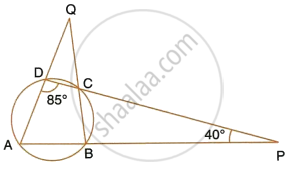
In the given figure, AB is the diameter of a circle with centre O. ∠BCD = 130°. Find:
(i) ∠DAB
(ii) ∠DBA
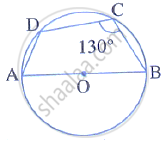
The given figure shows a semi-circle with centre O and diameter PQ. If PA = AB and ∠BCQ =140°; find measures of angles PAB and AQB. Also, show that AO is parallel to BQ.
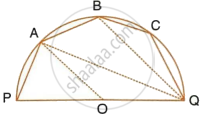
In following figure.,ABCD is a cyclic quadrilateral . If ∠ BCD = 100° and ∠ ABD = 70° , find ∠ ADB.
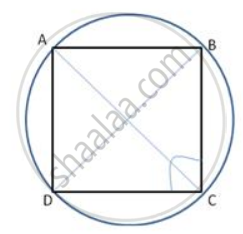
In the given figure, AB is the diameter. The tangent at C meets AB produced at Q.

If ∠ CAB = 34° , find : ∠ CQB
In the following figure, Prove that AD is parallel to FE.

In the figure, ∠DBC = 58°. BD is a diameter of the circle. Calculate : ∠BDC
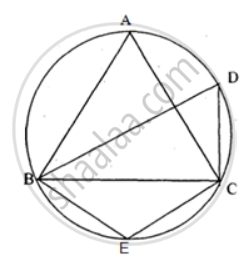
In the figure , Δ PQR is an isosceles triangle with PQ = PR, and m ∠ PQR = 35°. Find m ∠ QSR and ∠ QTR.
